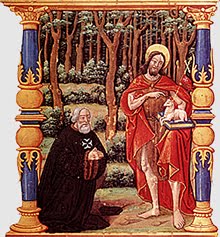The 19th century was the period of the great revival of Catholicism in Britain and symptomatic of this movement was the reintroduction of the Order of Malta into this country. The Order, so powerful in Europe in the Middle Ages, was suppressed in England along with the other Religious Orders by Henry VIII.
The wish to reintroduce the Order to Britain coincided with the return from the Crimea of the Sisters of Mercy to Bermondsey where they had been established in 1839. These nuns had nursed wounded British soldiers at Scutari and Florence Nightingale had written to them "… you were valued here as you deserve… the gratitude of the Army is yours".
Cardinal Wiseman was determined to establish a hospital for the poor of London, particularly the incurably sick and for children, and he saw in the Sisters of Mercy and in the Knights nursing and administrative ability to enable him to achieve his aim. In 1856 the nuns moved into 47 Great Ormond Street. The hospital opened on the Feast of St. Elizabeth of Hungary (17th November) 1856, following the purchase of the property by a group of leading Catholic laymen including the Duke of Norfolk and Sir George Bowyer.
Sir George Bowyer constructed the present magnificent church both for the knights of Malta and for the nuns and their patients. It was opened on the Feast of St. John 1864 by Cardinal Wiseman, the architect being George Goldie, a leading Catholic architect of the day, and was built "in the Italian baroque style particularly favoured by Anglican converts to Rome".
In the early l890's the Hospital moved to St John’s Wood, a former property of the Order before the Reformation, with the Children’s Hospital remaining in Great Ormond Street. The church was carefully dismantled and re-erected as the centrepiece of the new Hospital designed by Edward Goldie, the son of the original architect. The foundation stone of the reconstruction was laid by Cardinal Vaughan on 7th June l899 and it may be seen at the back of the church.
When Sir George Bowyer died in 1883 he left his heart to the church and it still lies beneath the slab marking it in front of the High Altar.

The Italianate façade of the church immediately informs the visitor that this is a Church of the Order of Malta - Maltese crosses abound.
The design, by George Goldie, is in fact a fairly close copy of the church of S Nicholas des Lorrains in Rome. Much of the contents of the church were installed in 1864, including the marble High Altar under its baldacchino; this was the gift of the Lieutenant Grand Master of the Order to the British Knights. The altar to the right, in Siena marble with a Spanish tortoiseshell reredos and crucifix, was the gift of Cardinal Wiseman, but had formerly belonged to the Throckmorton family, many of whose descendants are members of the Order today.
The church also contains two 17th century statues of saints over the west door facing the altar. These are reputed to have once been part of the stern decoration on one of the Order's galleys.
To the left to the sanctuary sits the large red and gilt throne occupied by the Grand Master of the Order when in England and by the Grand Prior of England at other times. The large black rock is from Mount Phileremos on Rhodes (the seat of the Order from l310 to l523) and is surmounted by a reproduction of the Icon of Our Lady of Philermo to whom the Order has a special devotion.



